Progress in Electronic, Energy, Biomedical and Environmental Applications of Boron Nitride and MoS2 Nanostructures
Abstract
:1. Introduction
2. Electronic and Energy Applications
2.1. Electronic Applications of BN Nanostructures
2.1.1. Nanoelectronics Devices
2.1.2. Photovoltaic/Solar Cells
2.2. Energy Applications of BN Nanostructures
2.2.1. Separators in Batteries
2.2.2. Energy Storage in Batteries
2.2.3. Hydrogen Evolution Reaction (HER) and Water Splitting
2.3. Electronic Applications of MoS2 Nanostructures
2.3.1. Gas Sensors
2.3.2. Photodetectors and Phototransistors
2.3.3. Electronic Devices
2.4. Energy Applications of MoS2 Nanostructures
2.4.1. Lithium-Ion Batteries
2.4.2. Sodium-Ion Batteries
2.4.3. Supercapacitors
2.4.4. Solar Cells
3. Biomedical Applications:
3.1. Biomedical Applications of BN Nanostructures
3.1.1. BNQDs: Properties and Applications
3.1.2. Photoluminescence in BNQDs
3.1.3. Biocompatibility and Cytotoxicity of BNQDs
3.1.4. Electrochemical Luminescence in BNQDs
3.1.5. BNNTs: High-Brightness Fluorophores
3.2. Biomedical Applications of MoS2 Nanostructures
3.2.1. Drug Release by External Stimuli
3.2.2. Label-Free Virus Sensors
3.2.3. Piezopotential Neuron Stimulation
3.2.4. Photothermal–Chemo Therapy
4. Environmental Applications
4.1. Environmental Applications of BN Nanostructures
4.1.1. Sensors and Gas Capture
4.1.2. Desalination and Water Treatment Membranes
4.1.3. Corrosion Protection
4.2. Environmental Applications MoS2 Nanostructures
4.2.1. Photocatalyst
4.2.2. MoS2-Based Sensors
5. Summary and Future Perspective
Funding
Conflicts of Interest
References
- Ekimov, A.I.; Onushchenko, A.A. Quantum size effect in 3-dimensional microscopic semiconductor crystals. JETP Lett. 1981, 34, 345–349. [Google Scholar] [CrossRef]
- Brus, L.E. Electron–electron and electron-hole interactions in small semiconductor crystallites: The size dependence of the lowest excited electronic state. J. Chem. Phys. 1984, 80, 4403–4409. [Google Scholar] [CrossRef]
- Murray, C.B.; Norris, D.J.; Bawendi, M.G. Synthesis and characterization of nearly monodisperse CdE (E = sulfur, selenium, tellurium) semiconductor nanocrystallites. J. Am. Chem. Soc. 1993, 115, 8706–8715. [Google Scholar] [CrossRef]
- Iijima, S. Helical microtubules of graphitic carbon. Nature 1991, 354, 56–58. [Google Scholar] [CrossRef]
- Roco, M.C.; Williams, R.S.; Alivisatos, P. Nanotechnology Research Directions: IWGN Workshop Report. In Vision for Nanotechnology in the Next Decade; Springer: Dordrecht, The Netherlands, 2000. [Google Scholar]
- Roco, M.C.; Mirkin, C.A.; Hersam, M.C. Nanotechnology research directions for societal needs in 2020: Summary of international study. J. Nanopart. Res. 2011, 13, 897–919. [Google Scholar] [CrossRef]
- OSTP. National Nanotechnology Initiative Strategic Plan; National Nanotechnology Coordination Office: Alexandria, VA, USA, 2021.
- Lee, C.H.; Johnson, N.; Drelich, J.; Yap, Y.K. The performance of superhydrophobic and superoleophilic carbon nanotube meshes in water–oil filtration. Carbon 2011, 49, 669–676. [Google Scholar] [CrossRef]
- Tiwari, B.; Zhang, D.; Winslow, D.; Lee, C.H.; Hao, B.; Yap, Y.K. A Simple and Universal Technique To Extract One- and Two-Dimensional Nanomaterials from Contaminated Water. ACS Appl. Mater. Interfaces 2015, 7, 26108–26116. [Google Scholar] [CrossRef]
- Lee, C.H.; Tiwari, B.; Zhang, D.; Yap, Y.K. Water purification: Oil–water separation by nanotechnology and environmental concerns. Environ. Sci. Nano 2017, 4, 514–525. [Google Scholar] [CrossRef]
- Acharya, A.; Sharma, S.; Liu, X.; Zhang, D.; Yap, Y.K. A Review on van der Waals Boron Nitride Quantum Dots. C 2021, 7, 35. [Google Scholar] [CrossRef]
- Zhang, D.; Yapici, N.; Oakley, R.; Yap, Y.K. The rise of boron nitride nanotubes for applications in energy harvesting, nanoelectronics, quantum materials, and biomedicine. J. Mater. Res. 2022, 37, 4605–4619. [Google Scholar] [CrossRef]
- Zhang, D.Y.; Zhang, S.Q.; Yapici, N.; Oakley, R.; Sharma, S.; Parashar, V.; Yap, Y.K. Emerging Applications of Boron Nitride Nanotubes in Energy Harvesting, Electronics, and Biomedicine. ACS Omega 2021, 6, 20722–20728. [Google Scholar] [CrossRef]
- Naclerio, A.E.; Kidambi, P.R. A Review of Scalable Hexagonal Boron Nitride (h-BN) Synthesis for Present and Future Applications. Adv. Mater. 2023, 35, 2207374. [Google Scholar] [CrossRef]
- Kabel, J.; Sharma, S.; Acharya, A.; Zhang, D.; Yap, Y.K. Molybdenum Disulfide Quantum Dots: Properties, Synthesis, and Applications. C 2021, 7, 45. [Google Scholar] [CrossRef]
- Ye, M.; Winslow, D.; Zhang, D.; Pandey, R.; Yap, Y.K. Recent Advancement on the Optical Properties of Two-Dimensional Molybdenum Disulfide (MoS2) Thin Films. Photonics 2015, 2, 288–307. [Google Scholar] [CrossRef]
- Ye, M.; Zhang, D.; Yap, Y.K. Recent advances in electronic and optoelectronic devices based on two-dimensional transition metal dichalcogenides. Electronics 2017, 6, 43. [Google Scholar] [CrossRef]
- Nalwa, H.S. A review of molybdenum disulfide (MoS2) based photodetectors: From ultra-broadband, self-powered to flexible devices. RSC Adv. 2020, 10, 30529–30602. [Google Scholar] [CrossRef] [PubMed]
- Lee, C.H.; Kayastha, V.K.; Wang, J.; Yap, Y.K. Introduction to B–C–N Materials. In BCN Nanotubes and Related Nanostructures; Springer: New York, NY, USA, 2009; pp. 1–22. [Google Scholar]
- Wang, J.; Lee, C.H.; Yap, Y.K. Recent advancements in boron nitride nanotubes. Nanoscale 2010, 2, 2028–2034. [Google Scholar] [CrossRef]
- Wu, H.; Cui, Y.; Xu, J.; Yan, Z.; Xie, Z.; Hu, Y.; Zhu, S. Multifunctional Half-Floating-Gate Field-Effect Transistor Based on MoS(2)-BN-Graphene van der Waals Heterostructures. Nano Lett. 2022, 22, 2328–2333. [Google Scholar] [CrossRef] [PubMed]
- Kim, K.K.; Lee, H.S.; Lee, Y.H. Synthesis of hexagonal boron nitride heterostructures for 2D van der Waals electronics. Chem. Soc. Rev. 2018, 47, 6342–6369. [Google Scholar] [CrossRef] [PubMed]
- Wang, Z.D.; Meng, G.D.; Wang, L.L.; Tian, L.L.; Chen, S.Y.; Wu, G.L.; Kong, B.; Cheng, Y.H. Simultaneously enhanced dielectric properties and through-plane thermal conductivity of epoxy composites with alumina and boron nitride nanosheets. Sci. Rep. 2021, 11, 2495. [Google Scholar] [CrossRef]
- Xu, M.; Xu, T.; Yu, A.; Wang, H.; Wang, H.; Zubair, M.; Luo, M.; Shan, C.; Guo, X.; Wang, F.; et al. Optoelectronic Synapses Based on Photo-Induced Doping in MoS2/h-BN Field-Effect Transistors. Adv. Opt. Mater. 2021, 9, 2100937. [Google Scholar] [CrossRef]
- Qin, J.K.; Liao, P.Y.; Si, M.W.; Gao, S.Y.; Qiu, G.; Jian, J.; Wang, Q.X.; Zhang, S.Q.; Huang, S.Y.; Charnas, A.; et al. Raman response and transport properties of tellurium atomic chains encapsulated in nanotubes. Nat. Electron. 2020, 3, 141–147. [Google Scholar] [CrossRef]
- Lee, C.H.; Qin, S.Y.; Savaikar, M.A.; Wang, J.S.; Hao, B.Y.; Zhang, D.Y.; Banyai, D.; Jaszczak, J.A.; Clark, K.W.; Idrobo, J.C.; et al. Room-Temperature Tunneling Behavior of Boron Nitride Nanotubes Functionalized with Gold Quantum Dots. Adv. Mater. 2013, 25, 4544–4548. [Google Scholar] [CrossRef] [PubMed]
- Yang, H.; Wang, G.; Guo, Y.; Wang, L.; Tan, B.; Zhang, S.; Zhang, X.; Zhang, J.; Shuai, Y.; Lin, J.; et al. Growth of wafer-scale graphene-hexagonal boron nitride vertical heterostructures with clear interfaces for obtaining atomically thin electrical analogs. Nanoscale 2022, 14, 4204–4215. [Google Scholar] [CrossRef] [PubMed]
- Futaba, D.N. Hexagonal boron nitride heterostructures go large. Nat. Electron. 2023, 6, 104–105. [Google Scholar] [CrossRef]
- Ma, K.Y.; Zhang, L.; Jin, S.; Wang, Y.; Yoon, S.I.; Hwang, H.; Oh, J.; Jeong, D.S.; Wang, M.; Chatterjee, S.; et al. Epitaxial single-crystal hexagonal boron nitride multilayers on Ni (111). Nature 2022, 606, 88–93. [Google Scholar] [CrossRef]
- Yang, P.; Zha, J.; Gao, G.; Zheng, L.; Huang, H.; Xia, Y.; Xu, S.; Xiong, T.; Zhang, Z.; Yang, Z.; et al. Growth of Tellurium Nanobelts on h-BN for p-type Transistors with Ultrahigh Hole Mobility. Nanomicro Lett. 2022, 14, 109. [Google Scholar] [CrossRef] [PubMed]
- Phan, N.A.N.; Noh, H.; Kim, J.; Kim, Y.; Kim, H.; Whang, D.; Aoki, N.; Watanabe, K.; Taniguchi, T.; Kim, G.H. Enhanced Performance of WS(2) Field-Effect Transistor through Mono and Bilayer h-BN Tunneling Contacts. Small 2022, 18, e2105753. [Google Scholar] [CrossRef] [PubMed]
- Iqbal, M.W.; Iqbal, M.Z.; Khan, M.F.; Shehzad, M.A.; Seo, Y.; Park, J.H.; Hwang, C.; Eom, J. High-mobility and air-stable single-layer WS2 field-effect transistors sandwiched between chemical vapor deposition-grown hexagonal BN films. Sci. Rep. 2015, 5, 10699. [Google Scholar] [CrossRef]
- Liang, B.X.; Wang, A.J.; Zhou, J.; Ju, S.H.; Chen, J.; Watanabe, K.; Taniguchi, T.; Shi, Y.; Li, S.L. Clean BN-Encapsulated 2D FETs with Lithography-Compatible Contacts. ACS Appl. Mater. Interfaces 2022, 14, 18697–18703. [Google Scholar] [CrossRef]
- Ajayan, J.; Nirmal, D.; Mohankumar, P.; Saravanan, M.; Jagadesh, M.; Arivazhagan, L. A review of photovoltaic performance of organic/inorganic solar cells for future renewable and sustainable energy technologies. Superlattices Microstruct. 2020, 143, 106549. [Google Scholar] [CrossRef]
- Al-Ezzi, A.S.; Ansari, M.N.M. Photovoltaic Solar Cells: A Review. Appl. Syst. Innov. 2022, 5, 67. [Google Scholar] [CrossRef]
- Angizi, S.; Alem, S.A.A.; Pakdel, A. Towards Integration of Two-Dimensional Hexagonal Boron Nitride (2D h-BN) in Energy Conversion and Storage Devices. Energies 2022, 15, 1162. [Google Scholar] [CrossRef]
- Chen, R.; Li, Q.; Zhang, Q.; Wang, M.; Fang, W.; Zhang, Z.; Yun, F.; Wang, T.; Hao, Y. Electronic Properties of Vertically Stacked h-BN/B1−xAlxN Heterojunction on Si(100). ACS Appl. Mater. Interfaces 2023, 15, 16211–16220. [Google Scholar] [CrossRef] [PubMed]
- Tavakoli, M.M.; Park, J.H.; Mwaura, J.; Saravanapavanantham, M.; Bulović, V.; Kong, J. Monolayer Hexagonal Boron Nitride: An Efficient Electron Blocking Layer in Organic Photovoltaics. Adv. Funct. Mater. 2021, 31, 2101238. [Google Scholar] [CrossRef]
- Cho, A.J.; Kwon, J.Y. Hexagonal Boron Nitride for Surface Passivation of Two-Dimensional van der Waals Heterojunction Solar Cells. ACS Appl. Mater. Interfaces 2019, 11, 39765–39771. [Google Scholar] [CrossRef]
- Raj, V.; Chugh, D.; Black, L.E.; Shehata, M.M.; Li, L.; Kremer, F.; Macdonald, D.H.; Tan, H.H.; Jagadish, C. Passivation of InP solar cells using large area hexagonal-BN layers. npj 2D Mater. Appl. 2021, 5, 12. [Google Scholar] [CrossRef]
- Hu, J.; Yue, M.; Zhang, H.; Yuan, Z.; Li, X. A Boron Nitride Nanosheets Composite Membrane for a Long-Life Zinc-Based Flow Battery. Angew. Chem. Int. Ed. 2020, 59, 6715–6719. [Google Scholar] [CrossRef] [PubMed]
- Kim, H.S.; Kang, H.J.; Lim, H.; Hwang, H.J.; Park, J.W.; Lee, T.G.; Cho, S.Y.; Jang, S.G.; Jun, Y.S. Boron Nitride Nanotube-Based Separator for High-Performance Lithium-Sulfur Batteries. Nanomaterials 2021, 12, 11. [Google Scholar] [CrossRef]
- Han, R.; Liu, F.; Wang, X.F.; Huang, M.H.; Li, W.X.; Yamauchi, Y.; Sun, X.D.; Huang, Z.G. Functionalised hexagonal boron nitride for energy conversion and storage. J. Mater. Chem. A 2020, 8, 14384–14399. [Google Scholar] [CrossRef]
- Yanar, N.; Yang, E.; Park, H.; Son, M.; Choi, H. Boron Nitride Nanotube (BNNT) Membranes for Energy and Environmental Applications. Membranes 2020, 10, 430. [Google Scholar] [CrossRef] [PubMed]
- Rahman, M.M.; Mateti, S.; Cai, Q.; Sultana, I.; Fan, Y.; Wang, X.; Hou, C.; Chen, Y. High temperature and high rate lithium-ion batteries with boron nitride nanotubes coated polypropylene separators. Energy Storage Mater. 2019, 19, 352–359. [Google Scholar] [CrossRef]
- De Moraes, A.C.M.; Hyun, W.J.; Luu, N.S.; Lim, J.M.; Park, K.Y.; Hersam, M.C. Phase-Inversion Polymer Composite Separators Based on Hexagonal Boron Nitride Nanosheets for High-Temperature Lithium-Ion Batteries. ACS Appl. Mater. Interfaces 2020, 12, 8107–8114. [Google Scholar] [CrossRef]
- Karabelli, D.; Birke, K.P. Feasible Energy Density Pushes of Li-Metal vs. Li-Ion Cells. Appl. Sci. 2021, 11, 7592. [Google Scholar] [CrossRef]
- Zhao, H.J.; Deng, N.P.; Yan, J.; Kang, W.M.; Ju, J.G.; Ruan, Y.L.; Wang, X.Q.; Zhuang, X.P.; Li, Q.X.; Cheng, B.W. A review on anode for lithium-sulfur batteries: Progress and prospects. Chem. Eng. J. 2018, 347, 343–365. [Google Scholar] [CrossRef]
- Sun, K.; Guo, P.; Shang, X.; Fu, Y.; Cheng, P.; Liu, Q.; Weng, Q.; Liu, D.; He, D. Mesoporous boron carbon nitride/graphene modified separators as efficient polysulfides barrier for highly stable lithium-sulfur batteries. J. Electroanal. Chem. 2019, 842, 34–40. [Google Scholar] [CrossRef]
- Mussa, Y.; Bayhan, Z.; Althubaiti, N.; Arsalan, M.; Alsharaeh, E. Hexagonal boron nitride effect on the performance of graphene-based lithium–sulfur batteries and its stability at elevated temperatures. Mater. Chem. Phys. 2021, 257, 123807. [Google Scholar] [CrossRef]
- Klimpel, M.; Kovalenko, M.V.; Kravchyk, K.V. Advances and challenges of aluminum-sulfur batteries. Commun. Chem. 2022, 5, 77. [Google Scholar] [CrossRef]
- Zhang, K.; Lee, T.H.; Cha, J.H.; Varma, R.S.; Choi, J.W.; Jang, H.W.; Shokouhimehr, M. Two-dimensional boron nitride as a sulfur fixer for high performance rechargeable aluminum-sulfur batteries. Sci. Rep. 2019, 9, 13573. [Google Scholar] [CrossRef]
- Cao, Y. Roadmap and Direction toward High-Performance MoS2 Hydrogen Evolution Catalysts. ACS Nano 2021, 15, 11014–11039. [Google Scholar] [CrossRef]
- Lukowski, M.A.; Daniel, A.S.; Meng, F.; Forticaux, A.; Li, L.; Jin, S. Enhanced Hydrogen Evolution Catalysis from Chemically Exfoliated Metallic MoS2 Nanosheets. J. Am. Chem. Soc. 2013, 135, 10274–10277. [Google Scholar] [CrossRef] [PubMed]
- Voiry, D.; Salehi, M.; Silva, R.; Fujita, T.; Chen, M.; Asefa, T.; Shenoy, V.B.; Eda, G.; Chhowalla, M. Conducting MoS2 Nanosheets as Catalysts for Hydrogen Evolution Reaction. Nano Lett. 2013, 13, 6222–6227. [Google Scholar] [CrossRef] [PubMed]
- Kong, D.; Wang, H.; Cha, J.J.; Pasta, M.; Koski, K.J.; Yao, J.; Cui, Y. Synthesis of MoS2 and MoSe2 Films with Vertically Aligned Layers. Nano Lett. 2013, 13, 1341–1347. [Google Scholar] [CrossRef]
- Tsai, C.; Li, H.; Park, S.; Park, J.; Han, H.S.; Nørskov, J.K.; Zheng, X.; Abild-Pedersen, F. Electrochemical generation of sulfur vacancies in the basal plane of MoS2 for hydrogen evolution. Nat. Commun. 2017, 8, 15113. [Google Scholar] [CrossRef]
- Dai, X.; Du, K.; Li, Z.; Liu, M.; Ma, Y.; Sun, H.; Zhang, X.; Yang, Y. Co-Doped MoS2 Nanosheets with the Dominant CoMoS Phase Coated on Carbon as an Excellent Electrocatalyst for Hydrogen Evolution. ACS Appl. Mater. Interfaces 2015, 7, 27242–27253. [Google Scholar] [CrossRef]
- Li, X.X.; Zhao, J.; Yang, J.L. Semihydrogenated BN Sheet: A Promising Visible-light Driven Photocatalyst for Water Splitting. Sci. Rep. 2013, 3, srep01858. [Google Scholar] [CrossRef]
- Saha, S. 2D stacking of graphene and boron nitride for efficient metal free overall water splitting. Int. J. Hydrogen Energy 2024, 51, 503–514. [Google Scholar] [CrossRef]
- Donarelli, M.; Ottaviano, L. 2D Materials for Gas Sensing Applications: A Review on Graphene Oxide, MoS2, WS2 and Phosphorene. Sensors 2018, 18, 3638. [Google Scholar] [CrossRef]
- Schedin, F.; Geim, A.K.; Morozov, S.V.; Hill, E.W.; Blake, P.; Katsnelson, M.I.; Novoselov, K.S. Detection of individual gas molecules adsorbed on graphene. Nat. Mater. 2007, 6, 652–655. [Google Scholar] [CrossRef] [PubMed]
- Kumar, R.; Zheng, W.; Liu, X.H.; Zhang, J.; Kumar, M. MoS2-Based Nanomaterials for Room-Temperature Gas Sensors. Adv. Mater. Technol. 2020, 5, 1901062. [Google Scholar] [CrossRef]
- Cho, S.Y.; Kim, S.J.; Lee, Y.; Kim, J.S.; Jung, W.B.; Yoo, H.W.; Kim, J.; Jung, H.T. Highly Enhanced Gas Adsorption Properties in Vertically Aligned MoS2 Layers. ACS Nano 2015, 9, 9314–9321. [Google Scholar] [CrossRef]
- Cui, S.M.; Wen, Z.H.; Huang, X.K.; Chang, J.B.; Chen, J.H. Stabilizing MoS2 Nanosheets through SnO2 Nanocrystal Decoration for High-Performance Gas Sensing in Air. Small 2015, 11, 2305–2313. [Google Scholar] [CrossRef]
- Yan, H.H.; Song, P.; Zhang, S.; Zhang, J.; Yang, Z.X.; Wang, Q. A low temperature gas sensor based on Au-loaded MoS2 hierarchical nanostructures for detecting ammonia. Ceram. Int. 2016, 42, 9327–9331. [Google Scholar] [CrossRef]
- Taffelli, A.; Dire, S.; Quaranta, A.; Pancheri, L. MoS2 Based Photodetectors: A Review. Sensors 2021, 21, 2758. [Google Scholar] [CrossRef]
- Gong, F.; Fang, H.H.; Wang, P.; Su, M.; Li, Q.; Ho, J.C.; Chen, X.S.; Lu, W.; Liao, L.; Wang, J.; et al. Visible to near-infrared photodetectors based on MoS2 vertical Schottky junctions. Nanotechnology 2017, 28, 484002. [Google Scholar] [CrossRef]
- Long, M.S.; Liu, E.F.; Wang, P.; Gao, A.Y.; Xia, H.; Luo, W.; Wang, B.G.; Zeng, J.W.; Fu, Y.J.; Xu, K.; et al. Broadband Photovoltaic Detectors Based on an Atomically Thin Heterostructure. Nano Lett. 2016, 16, 2254–2259. [Google Scholar] [CrossRef]
- Wu, D.; Lou, Z.H.; Wang, Y.G.; Yao, Z.Q.; Xu, T.T.; Shi, Z.F.; Xu, J.M.; Tian, Y.T.; Li, X.J.; Tsang, Y.H. Photovoltaic high-performance broadband photodetector based on MoS2/Si nanowire array heterojunction. Sol. Energy Mater. Sol. Cells 2018, 182, 272–280. [Google Scholar] [CrossRef]
- Tsai, D.S.; Liu, K.K.; Lien, D.H.; Tsai, M.L.; Kang, C.F.; Lin, C.A.; Li, L.J.; He, J.H. Few-Layer MoS2 with High Broadband Photogain and Fast Optical Switching for Use in Harsh Environments. ACS Nano 2013, 7, 3905–3911. [Google Scholar] [CrossRef] [PubMed]
- Kallatt, S.; Nair, S.; Majumdar, K. Asymmetrically Encapsulated Vertical ITO/MoS2/Cu2O Photodetector with Ultrahigh Sensitivity. Small 2018, 14, 1702066. [Google Scholar] [CrossRef] [PubMed]
- Wang, C.L.; Song, Y.L.; Huang, H. Evolution Application of Two-Dimensional MoS2-Based Field-Effect Transistors. Nanomaterials 2022, 12, 3233. [Google Scholar] [CrossRef] [PubMed]
- Radisavljevic, B.; Radenovic, A.; Brivio, J.; Giacometti, V.; Kis, A. Single-layer MoS2 transistors. Nat. Nanotechnol. 2011, 6, 147–150. [Google Scholar] [CrossRef]
- Shen, P.C.; Su, C.; Lin, Y.X.; Chou, A.S.; Cheng, C.C.; Park, J.H.; Chiu, M.H.; Lu, A.Y.; Tang, H.L.; Tavakoli, M.M.; et al. Ultralow contact resistance between semimetal and monolayer semiconductors. Nature 2021, 593, 211–217. [Google Scholar] [CrossRef]
- Yang, A.J.; Han, K.; Huang, K.; Ye, C.; Wen, W.; Zhu, R.; Zhu, R.; Xu, J.; Yu, T.; Gao, P.; et al. Van der Waals integration of high-κ perovskite oxides and two-dimensional semiconductors. Nat. Electron. 2022, 5, 233–240. [Google Scholar] [CrossRef]
- Huang, J.-K.; Wan, Y.; Shi, J.; Zhang, J.; Wang, Z.; Wang, W.; Yang, N.; Liu, Y.; Lin, C.-H.; Guan, X.; et al. High-κ perovskite membranes as insulators for two-dimensional transistors. Nature 2022, 605, 262–267. [Google Scholar] [CrossRef]
- Teng, Y.Q.; Zhao, H.L.; Zhang, Z.J.; Li, Z.L.; Xia, Q.; Zhang, Y.; Zhao, L.N.; Du, X.F.; Du, Z.H.; Lv, P.P.; et al. MoS2 Nanosheets Vertically Grown on Graphene Sheets for Lithium-Ion Battery Anodes. ACS Nano 2016, 10, 8526–8535. [Google Scholar] [CrossRef]
- Xiang, T.; Fang, Q.; Xie, H.; Wu, C.Q.; Wang, C.D.; Zhou, Y.; Liu, D.B.; Chen, S.M.; Khalil, A.; Tao, S.; et al. Vertical 1T-MoS2 nanosheets with expanded interlayer spacing edged on a graphene frame for high rate lithium-ion batteries. Nanoscale 2017, 9, 6975–6983. [Google Scholar] [CrossRef]
- Li, Z.; Zhan, X.; Zhu, W.F.; Qi, S.H.; Braun, P.V. Carbon-Free, High-Capacity and Long Cycle Life 1D-2D NiMoO4 Nanowires/Metallic 1T MoS2 Composite Lithium-Ion Battery Anodes. ACS Appl. Mater. Interfaces 2019, 11, 44593–44600. [Google Scholar] [CrossRef]
- Li, X.L.; Li, T.C.; Huang, S.Z.; Zhang, J.; Pam, M.E.; Yang, H.Y. Controllable Synthesis of Two-Dimensional Molybdenum Disulfide (MoS2) for Energy-Storage Applications. ChemSusChem 2020, 13, 1379–1391. [Google Scholar] [CrossRef] [PubMed]
- Hu, X.D.; Sun, X.H.; Yoo, S.J.; Evanko, B.; Fan, F.R.; Cai, S.; Zheng, C.M.; Hu, W.B.; Stucky, G.D. Nitrogen-rich hierarchically porous carbon as a high-rate anode material with ultra-stable cyclability and high capacity for capacitive sodium-ion batteries. Nano Energy 2019, 56, 828–839. [Google Scholar] [CrossRef]
- Geng, X.M.; Jiao, Y.C.; Han, Y.; Mukhopadhyay, A.; Yang, L.; Zhu, H.L. Freestanding Metallic 1T MoS2 with Dual Ion Diffusion Paths as High Rate Anode for Sodium-Ion Batteries. Adv. Funct. Mater. 2017, 27, 1702998. [Google Scholar] [CrossRef]
- Hu, X.; Li, Y.; Zeng, G.; Jia, J.C.; Zhan, H.B.; Wen, Z.H. Three-Dimensional Network Architecture with Hybrid Nanocarbon Composites Supporting Few-Layer MoS2 for Lithium and Sodium Storage. ACS Nano 2018, 12, 1592–1602. [Google Scholar] [CrossRef]
- Fan, R.Z.; Zhao, C.Y.; Ma, J.H.; Lei, S.L.; Liang, G.J.; He, T.; Zhu, G.C.; Cai, Y.R. Boosting reaction kinetics and improving long cycle life in lamellar VS2/MoS2 heterojunctions for superior sodium storage performance. J. Mater. Chem. A 2022, 10, 939–949. [Google Scholar] [CrossRef]
- Yao, K.; Xu, Z.W.; Huang, J.F.; Ma, M.; Fu, L.C.; Shen, X.T.; Li, J.; Fu, M.S. Bundled Defect-Rich MoS2 for a High-Rate and Long-Life Sodium-Ion Battery: Achieving 3D Diffusion of Sodium Ion by Vacancies to Improve Kinetics. Small 2019, 15, 1805405. [Google Scholar] [CrossRef]
- Saha, D.; Kruse, P. Editors’ Choice-Review-Conductive Forms of MoS(2)and Their Applications in Energy Storage and Conversion. J. Electrochem. Soc. 2020, 167, 126517. [Google Scholar] [CrossRef]
- Ali, M.; Afzal, A.M.; Iqbal, M.W.; Mumtaz, S.; Imran, M.; Ashraf, F.; Rehman, A.U.; Muhammad, F. 2D-TMDs based electrode material for supercapacitor applications. Int. J. Energy Res. 2022, 46, 22336–22364. [Google Scholar] [CrossRef]
- Fan, L.Q.; Liu, G.J.; Zhang, C.Y.; Wu, J.H.; Wei, Y.L. Facile one-step hydrothermal preparation of molybdenum disulfide/carbon composite for use in supercapacitor. Int. J. Hydrogen Energy 2015, 40, 10150–10157. [Google Scholar] [CrossRef]
- Yuan, K.; Zhuang, X.D.; Hu, T.; Shi, L.; Sfaelou, S.; Polnick, U.; Forster, M.; Pichler, T.; Riedl, T.; Feng, X.L.; et al. 2D Heterostructures Derived from MoS2-Templated, Cobalt-Containing Conjugated Microporous Polymer Sandwiches for the Oxygen Reduction Reaction and Electrochemical Energy Storage. ChemElectroChem 2017, 4, 709–715. [Google Scholar] [CrossRef]
- Zhang, L.; Zhang, F.; Yang, X.; Long, G.K.; Wu, Y.P.; Zhang, T.F.; Leng, K.; Huang, Y.; Ma, Y.F.; Yu, A.; et al. Porous 3D graphene-based bulk materials with exceptional high surface area and excellent conductivity for supercapacitors. Sci. Rep. 2013, 3, 1408. [Google Scholar] [CrossRef] [PubMed]
- Firmiano, E.G.D.; Rabelo, A.C.; Dalmaschio, C.J.; Pinheiro, A.N.; Pereira, E.C.; Schreiner, W.H.; Leite, E.R. Supercapacitor Electrodes Obtained by Directly Bonding 2D MoS2 on Reduced Graphene Oxide. Adv. Energy Mater. 2014, 4, 1301380. [Google Scholar] [CrossRef]
- Sun, T.H.; Li, Z.P.; Liu, X.H.; Ma, L.M.; Wang, J.Q.; Yang, S.R. Facile construction of 3D graphene/MoS2 composites as advanced electrode materials for supercapacitors. J. Power Sources 2016, 331, 180–188. [Google Scholar] [CrossRef]
- Gao, Y.P.; Huang, K.J.; Wu, X.; Hou, Z.Q.; Liu, Y.Y. MoS2 nanosheets assembling three-dimensional nanospheres for enhanced-performance supercapacitor. J. Alloys Compd. 2018, 741, 174–181. [Google Scholar] [CrossRef]
- Vikraman, D.; Karuppasamy, K.; Hussain, S.; Kathalingam, A.; Sanmugam, A.; Jung, J.; Kim, H.S. One-pot facile methodology to synthesize MoS2-graphene hybrid nanocomposites for supercapacitors with improved electrochemical capacitance. Compos. Part B-Eng. 2019, 161, 555–563. [Google Scholar] [CrossRef]
- Bernardi, M.; Palummo, M.; Grossman, J.C. Extraordinary Sunlight Absorption and One Nanometer Thick Photovoltaics Using Two-Dimensional Monolayer Materials. Nano Lett. 2013, 13, 3664–3670. [Google Scholar] [CrossRef] [PubMed]
- Nawz, T.; Safdar, A.; Hussain, M.; Lee, D.S.; Siyar, M. Graphene to Advanced MoS2: A Review of Structure, Synthesis, and Optoelectronic Device Application. Crystals 2020, 10, 902. [Google Scholar] [CrossRef]
- Subbiah, V.; Landi, G.; Wu, J.J.; Anandan, S. MoS2 coated CoS2 nanocomposites as counter electrodes in Pt-free dye-sensitized solar cells. Phys. Chem. Chem. Phys. 2019, 21, 25474–25483. [Google Scholar] [CrossRef]
- Wei, W.; Sun, K.; Hu, Y.H. An efficient counter electrode material for dyesensitized solar cells-flower-structured 1T metallic phase MoS2. J. Mater. Chem. A 2016, 4, 12398–12401. [Google Scholar] [CrossRef]
- Lei, B.; Li, G.R.; Gao, X.P. Morphology dependence of molybdenum disulfide transparent counter electrode in dye-sensitized solar cells. J. Mater. Chem. A 2014, 2, 3919–3925. [Google Scholar] [CrossRef]
- Yuan, X.F.; Li, X.M.; Zhang, X.; Li, Y.; Liu, L. MoS2 vertically grown on graphene with efficient electrocatalytic activity in Pt-free dye-sensitized solar cells. J. Alloys Compd. 2018, 731, 685–692. [Google Scholar] [CrossRef]
- Liang, M.Y.; Ali, A.; Belaidi, A.; Hossain, M.I.; Ronan, O.; Downing, C.; Tabet, N.; Sanvito, S.; EI-Mellouhi, F.; Nicolosi, V. Improving stability of organometallic-halide perovskite solar cells using exfoliation two-dimensional molybdenum chalcogenides. Npj 2D Mater. Appl. 2020, 4, 40. [Google Scholar] [CrossRef]
- Tsuboi, Y.; Wang, F.J.; Kozawa, D.; Funahashi, K.; Mouri, S.; Miyauchi, Y.; Takenobu, T.; Matsuda, K. Enhanced photovoltaic performances of graphene/Si solar cells by insertion of a MoS2 thin film. Nanoscale 2015, 7, 14476–14482. [Google Scholar] [CrossRef]
- Shen, J.; Zhu, Y.; Yang, X.; Li, C. Graphene quantum dots: Emergent nanolights for bioimaging, sensors, catalysis and photovoltaic devices. Chem. Commun. 2012, 48, 3686–3699. [Google Scholar] [CrossRef]
- Wang, S.; Yu, J.; Zhao, P.; Guo, S.; Han, S. One-step synthesis of water-soluble CdS qauntun dots for silver-ion detection. ACS Omega 2021, 6, 7139–7146. [Google Scholar] [CrossRef]
- Norris, D.J. Measurement and Assignment of the Size-Dependent Optical Spectrum in Cadmium Selenide (CdSe) Quantum Dots. Ph.D. Thesis, Massachusetts Institute of Technology, Cambridge, MA, USA, 1995. [Google Scholar]
- Norris, D.J.; Bawendi, M. Measurement and assignment of the size-dependent optical spectrum in CdSe quantum dots. Phys. Rev. B 1996, 53, 16338–16346. [Google Scholar] [CrossRef] [PubMed]
- Pietryga, J.M.; Schaller, R.D.; Werder, D.; Stewart, M.H.; Klimov, V.I.; Hollingsworth, J.A. Pushing the band gap envelope: Mid-infrared emitting colloidal PbSe quantum dots. J. Am. Chem. Soc. 2004, 126, 11752–11753. [Google Scholar] [CrossRef]
- Martindale, B.C.; Hutton, G.A.; Caputo, C.A.; Reisner, E. Solar hydrogen production using carbon quantum dots and a molecular nickel catalyst. J. Am. Chem. Soc. 2015, 137, 6018–6025. [Google Scholar] [CrossRef] [PubMed]
- Song, J.; Zhao, L.; Wang, Y.; Xue, Y.; Deng, Y.; Zhao, X.; Li, Q. Carbon quantum dots prepared with chitosan for synthesis of CQDs/AuNPs for iodine ions detection. Nanomaterials 2018, 8, 1043. [Google Scholar] [CrossRef]
- Zhang, Z.; Chang, K.; Peeters, F. Tuning of energy levels and optical properties of graphene quantum dots. Phys. Rev. B 2008, 77, 235411. [Google Scholar] [CrossRef]
- Cui, Q.; Xu, J.; Wang, X.; Li, L.; Antonietti, M.; Shalom, M. Phenyl-modified carbon nitride quantum dots with distinct photoluminescence behavior. Angew. Chem. Int. Ed. 2016, 55, 3672–3676. [Google Scholar] [CrossRef]
- Cui, P.; Zhang, J. Photovoltaic performance of heteroatom-doped boron nitride quantum dots in quantum dot photovoltaic cells. Catal. Commun. 2023, 174, 106590. [Google Scholar] [CrossRef]
- Zhang, X.; An, L.; Bai, C.; Chen, L.; Yu, Y. Hexagonal boron nitride quantum dots: Properties, preparation and applications. Mater. Today Chem. 2021, 20, 100425. [Google Scholar] [CrossRef]
- Castelletto, S.; Inam, F.A.; Sato, S.-i.; Boretti, A. Hexagonal boron nitride: A review of the emerging material platform for single-photon sources and the spin–photon interface. Beilstein J. Nanotechnol. 2020, 11, 740–769. [Google Scholar] [CrossRef]
- Liu, M.; Xu, Y.; Wang, Y.; Chen, X.; Ji, X.; Niu, F.; Song, Z.; Liu, J. Boron nitride quantum dots with solvent-regulated blue/green photoluminescence and electrochemiluminescent behavior for versatile applications. Adv. Opt. Mater. 2017, 5, 1600661. [Google Scholar] [CrossRef]
- Li, H.; Tay, R.Y.; Tsang, S.H.; Zhen, X.; Teo, E.H.T. Controllable synthesis of highly luminescent boron nitride quantum dots. Small 2015, 11, 6491–6499. [Google Scholar] [CrossRef]
- Lin, L.; Xu, Y.; Zhang, S.; Ross, I.M.; Ong, A.; Allwood, D.A. Fabrication and luminescence of monolayered boron nitride quantum dots. Small 2014, 10, 60–65. [Google Scholar] [CrossRef]
- Xue, Q.; Zhang, H.; Zhu, M.; Wang, Z.; Pei, Z.; Huang, Y.; Huang, Y.; Song, X.; Zeng, H.; Zhi, C. Hydrothermal synthesis of blue-fluorescent monolayer BN and BCNO quantum dots for bio-imaging probes. RSC Adv. 2016, 6, 79090–79094. [Google Scholar] [CrossRef]
- Lei, Z.; Xu, S.; Wan, J.; Wu, P. Facile preparation and multifunctional applications of boron nitride quantum dots. Nanoscale 2015, 7, 18902–18907. [Google Scholar] [CrossRef] [PubMed]
- Liu, Q.; Hu, C.; Wang, X. One-pot solvothermal synthesis of water-soluble boron nitride nanosheets and fluorescent boron nitride quantum dots. Mater. Lett. 2019, 234, 306–310. [Google Scholar] [CrossRef]
- Hu, L.; Xu, G. Applications and trends in electrochemiluminescence. Chem. Soc. Rev. 2010, 39, 3275–3304. [Google Scholar] [CrossRef] [PubMed]
- Rawat, J.; Sajwan, D.; Garimella, S.V.; Sharma, H.; Dwivedi, C. Boron Nitride Quantum Dots: A Rising Star in Sensing Applications. Nano Trends 2023, 2, 100008. [Google Scholar] [CrossRef]
- Xing, H.; Zhai, Q.; Zhang, X.; Li, J.; Wang, E. Boron nitride quantum dots as efficient coreactant for enhanced electrochemiluminescence of ruthenium (II) tris (2,2′-bipyridyl). Anal. Chem. 2018, 90, 2141–2147. [Google Scholar] [CrossRef] [PubMed]
- Kong, Y.; He, Y.; Zhou, J.; Zhong, S.; Song, G. Amino Acids as the Nitrogen Source to Synthesize Boron Nitride Quantum Dots for Fluorescence Turn-off-on Detection of Ascorbic Acid. ChemistrySelect 2020, 5, 3828–3834. [Google Scholar] [CrossRef]
- Bhandari, S.; Tiwari, B.; Yapici, N.; Zhang, D.; Yap, Y.K. Chapter 1: Introduction to boron nitride nanotubes: Synthesis, properties, functionalization, and cutting. In Boron Nitride Nanotubes in Nanomedicine; William Andrew Publishing: Norwich, NY, USA, 2016; pp. 1–15. [Google Scholar]
- Hao, B.; Lee, C.H.; Wang, J.; Asthana, A.; Winslow, D.; Zhang, D.; Yap, Y.K. Chapter 20: Controlled synthesis of functional boron nitride nanostructures for applications. In Nanotubes and Nanosheets: Functionalization and Applications of Boron Nitride and Other Nanomaterials; Chen, Y.I., Ed.; CRC Press: Boca Raton, FL, USA, 2015; pp. 551–572. [Google Scholar]
- Lee, C.H.; Bhandari, S.; Tiwari, B.; Yapici, N.; Zhang, D.; Yap, Y.K. Boron nitride nanotubes: Recent advances in their synthesis, functionalization, and applications. Molecules 2016, 21, 922. [Google Scholar] [CrossRef]
- Wang, J.; Kayastha, V.K.; Yap, Y.K.; Fan, Z.; Lu, J.G.; Pan, Z.; Ivanov, I.N.; Puretzky, A.A.; Geohegan, D.B. Low temperature growth of boron nitride nanotubes on substrates. Nano Lett. 2005, 5, 2528–2532. [Google Scholar] [CrossRef]
- Gianni Ciofani, V.M. Boron Nitride Nanotubes in Nanomedicine; Elsevier: Amsterdam, The Netherlands, 2016. [Google Scholar]
- Ciofani, G.; Raffa, V.; Menciassi, A.; Cuschieri, A. Boron nitride nanotubes: An innovative tool for nanomedicine. Nano Today 2009, 4, 8–10. [Google Scholar] [CrossRef]
- Yap, Y.K.; Zhang, D.; Yapici, N.B. High-Brightness Fluorophores. U.S. Patent Application 20180296705A1, 18 October 2018. [Google Scholar]
- Yap, Y.K. Recent Advancement in Boron Nitride Nanotubes and Nanosheets. In Proceedings of the 2018 MRS Fall Meeting, Symposium NM01: Carbon Nanotubes, Graphenes and Related Nanostructures, Boston, MA, USA, 25–30 November 2018. Paper NM01.12.06. [Google Scholar]
- Yap, Y.K. Nanotube-Based, High-Brightness Fluorophores for Flow Cytometry. In Proceedings of the CYTO 2019, 34th Congress of the International Society for Advancement of Cytometry, Vancouver, BC, Canada, 22–26 June 2019. Late-Breaking Posterpaper B386. [Google Scholar]
- Yapici, N.; Oakley, R.; Liu, X.; Zhang, D.; Yap, Y.K. Ultra-High Brightness Dyes with Tunable Brightness for Flow Cytometry. In Proceedings of the 2020 Virtual MRS Fall Meeting, Symposium F.NM03: Nanotubes, Graphene and Related Nanostructures, Online, 27 November–4 December 2020. paper F.NM03.04.02. [Google Scholar]
- Lee, C.H.; Zhang, D.; Yap, Y.K. Functionalization, Dispersion, and Cutting of Boron Nitride Nanotubes in Water. J. Phys. Chem. C 2012, 116, 1798–1804. [Google Scholar] [CrossRef]
- Chiu, C.F.; Dementev, N.; Borguet, E. Fluorescence quenching of dyes covalently attached to single-walled carbon nanotubes. J. Phys. Chem. A 2011, 115, 9579–9584. [Google Scholar] [CrossRef] [PubMed]
- Casey, J.P.; Bachilo, S.M.; Weisman, R.B. Efficient photosensitized energy transfer and near-IR fluorescence from porphyrin-SWCNT complexed. J. Mater. Chem. 2008, 18, 1510–1516. [Google Scholar] [CrossRef]
- Martin, R.B.; Qu, L.; Lin, Y.; Harruff, B.A.; Bunker, C.E.; Gord, J.R.; Allard, L.F.; Sun, Y.-P. Functionalized Carbon Nanotubes with Tethered Pyrenes: Synthesis and Photophysical Properties. J. Phys. Chem. B 2004, 108, 11447–11453. [Google Scholar] [CrossRef]
- Lin, S.J.; Keskar, G.; Wu, Y.N.; Wang, X.; Mount, A.S.; Klaine, S.J.; Moore, J.M.; Rao, A.M.; Ke, P.C. Detection of phospholipid-carbon nanotube translocation using fluorescence energy transfer. Appl. Phys. Lett. 2006, 89, 143118. [Google Scholar] [CrossRef]
- Chen, F.M.; Zhang, W.J.; Jia, M.L.; Wei, L.; Fan, X.F.; Kuo, J.L.; Chen, Y.; Chan-Park, M.B.; Xia, A.D.; Li, L.J. Energy Transfer from Photo-Excited Fluorene Polymers to Single-Walled Carbon Nanotubes. J. Phys. Chem. C 2009, 113, 14946–14952. [Google Scholar] [CrossRef]
- Khodabakhshi, M.J.; Panahi, H.A.; Konoz, E.; Feizbakhsh, A.; Kimiagar, S. Synthesis of pH and thermo-sensitive dendrimers based on MoS2 and magnetic nanoparticles for cisplatin drug delivery system by the near-infrared laser. Polym. Adv. Technol. 2021, 32, 1626–1635. [Google Scholar] [CrossRef]
- Teo, W.Z.; Chng, E.L.K.; Sofer, Z.; Pumera, M. Cytotoxicity of Exfoliated Transition-Metal Dichalcogenides (MoS2, WS2, and WSe2) is Lower Than That of Graphene and its Analogues. Chem. Eur. J. 2014, 20, 9627–9632. [Google Scholar] [CrossRef]
- Chng, E.L.K.; Sofer, Z.; Pumera, M. MoS2 exhibits stronger toxicity with increased exfoliation. Nanoscale 2014, 6, 14412–14418. [Google Scholar] [CrossRef] [PubMed]
- Zhang, K.; Zhuang, Y.; Zhang, W.; Guo, Y.; Liu, X. Functionalized MoS2-nanoparticles for transdermal drug delivery of atenolol. Drug Deliv. 2020, 27, 909–916. [Google Scholar] [CrossRef]
- Dong, Y.; Wan, L.; Lv, S.; Zhu, D.; Su, S.; Chao, J.; Wang, L. Construction of a molybdenum disulfide-based colorimetric sensor for label-free infectious disease analysis coupled with a catalyzed hairpin assembly reaction. Langmuir 2022, 38, 1791–1796. [Google Scholar] [CrossRef]
- Fan, C.-H.; Tsai, H.-C.; Tsai, Y.-S.; Wang, H.-C.; Lin, Y.-C.; Chiang, P.-H.; Wu, N.; Chou, M.-H.; Ho, Y.-J.; Lin, Z.-H. Selective Activation of Cells by Piezoelectric Molybdenum Disulfide Nanosheets with Focused Ultrasound. ACS Nano 2023, 17, 9140–9154. [Google Scholar] [CrossRef] [PubMed]
- Liu, Q.; Song, P.; Zhang, W.; Wang, Z.; Yang, K.; Luo, J.; Zhu, L.; Gui, L.; Tao, Y.; Ge, F. Acid-sensitive nanoparticles based on molybdenum disulfide for photothermal-chemo therapy. ACS Biomater. Sci. Eng. 2022, 8, 1706–1716. [Google Scholar] [CrossRef] [PubMed]
- Ganji, M.D.; Alinezhad, H.; Soleymani, E.; Tajbakhsh, M. Adsorption of TCDD molecule onto CNTs and BNNTs: Ab initio van der Waals density-functional study. Phys. E-Low-Dimens. Syst. Nanostruct. 2015, 67, 105–111. [Google Scholar] [CrossRef]
- Yoosefian, M.; Etminan, N.; Moghani, M.Z.; Mirzaei, S.; Abbasi, S. The role of boron nitride nanotube as a new chemical sensor and potential reservoir for hydrogen halides environmental pollutants. Superlattices Microstruct. 2016, 98, 325–331. [Google Scholar] [CrossRef]
- Sharma, B.; Sharma, A.; Myung, J.H. Selective ppb-level NO2 gas sensor based on SnO2-boron nitride nanotubes. Sens. Actuators B-Chem. 2021, 331, 129464. [Google Scholar] [CrossRef]
- John, C.; Swathi, R.S. An anisotropic dressed pairwise potential model for the adsorption of noble gases on boron nitride sheets. Phys. Chem. Chem. Phys. 2022, 24, 2554–2566. [Google Scholar] [CrossRef]
- Zhu, W.; Wu, Z.; Foo, G.S.; Gao, X.; Zhou, M.; Liu, B.; Veith, G.M.; Wu, P.; Browning, K.L.; Lee, H.N.; et al. Taming interfacial electronic properties of platinum nanoparticles on vacancy-abundant boron nitride nanosheets for enhanced catalysis. Nat. Commun. 2017, 8, 15291. [Google Scholar] [CrossRef]
- Ron, S.; Falblsh, H.E. MSF Nuclear Desalination; Elsevier: Amsterdam, The Netherlands, 2003. [Google Scholar]
- Kim, S.J.; Ko, S.H.; Kang, K.H.; Han, J. Direct seawater desalination by ion concentration polarization. Nat. Nanotechnol. 2010, 5, 297–301. [Google Scholar] [CrossRef]
- Cappelle, M.; Walker, W.S.; Davis, T.A. Improving Desalination Recovery Using Zero Discharge Desalination (ZDD): A Process Model for Evaluating Technical Feasibility. Ind. Eng. Chem. Res. 2017, 56, 10448–10460. [Google Scholar] [CrossRef]
- Son, M.; Cho, K.H.; Jeong, K.; Park, J. Membrane and Electrochemical Processes for Water Desalination: A Short Perspective and the Role of Nanotechnology. Membranes 2020, 10, 280. [Google Scholar] [CrossRef] [PubMed]
- Won, C.Y.; Aluru, N.R. Water permeation through a subnanometer boron nitride nanotube. J. Am. Chem. Soc. 2007, 129, 2748–2749. [Google Scholar] [CrossRef]
- Liang, L.J.; Li, J.C.; Zhang, L.; Zhang, Z.S.; Shen, J.W.; Li, L.H.; Wu, J.Y. Computer simulation of water desalination through boron nitride nanotubes. Phys. Chem. Chem. Phys. 2017, 19, 30031–30038. [Google Scholar] [CrossRef] [PubMed]
- Zhang, L.; Jia, L.J.; Zhang, J.; Li, J.C.; Liang, L.J.; Kong, Z.; Shen, J.W.; Wang, X.P.; Zhang, W.; Wang, H.B. Understanding the effect of chemical modification on water desalination in boron nitride nanotubes via molecular dynamics simulation. Desalination 2019, 464, 84–93. [Google Scholar] [CrossRef]
- Mistry, S.; Pillai, R.; Mattia, D.; Borg, M.K. Untangling the physics of water transport in boron nitride nanotubes. Nanoscale 2021, 13, 18096–18102. [Google Scholar] [CrossRef]
- Chen, C.; Jia, L.J.; Zhang, L.; Chen, E.R.Y. Space and charge effect on the desalination performance of BNNT(8,8) membranes: A molecular dynamics study. Chem. Phys. Lett. 2023, 812, 140266. [Google Scholar] [CrossRef]
- Tang, X.M.; Wang, H.Y.; Liu, C.Y.; Zhu, X.R.; Gao, W.; Yin, H. Direct Growth of Hexagonal Boron Nitride Nanofilms on Stainless Steel for Corrosion Protection. ACS Appl. Nano Mater. 2021, 4, 12024–12033. [Google Scholar] [CrossRef]
- Duran, B.; Pat, S. Improved Corrosion Protection of Stainless Steel by Two Dimensional BN Nanomaterial Coating. ECS J. Solid State Sci. Technol. 2022, 11, 063017. [Google Scholar] [CrossRef]
- Zhou, M.; Zhao, C.C.; Liu, P.L.; Yu, H.B. Adsorption behavior of Ti3C2Tx with h-BN nanosheet and their application in waterborne epoxy anti-corrosion coating. Appl. Surf. Sci. 2022, 586, 152778. [Google Scholar] [CrossRef]
- Peng, W.C.; Li, X.Y. Synthesis of MoS2/g-C3N4 as A Solar Light-Responsive Photocatalyst for Organic Degradation; Elesvier: Amsterdam, The Netherlands, 2014. [Google Scholar]
- Tan, Y.H.; Yu, K.; Li, J.Z.; Fu, H.; Zhu, Z.Q. MoS2@ZnO nano-heterojunctions with enhanced photocatalysis and field emission properties. J. Appl. Phys. 2014, 116, 064305. [Google Scholar] [CrossRef]
- Liu, H.; Lv, T.; Zhu, C.K.; Su, X.; Zhu, Z.F. Efficient synthesis of MoS2 nanoparticles modified TiO2 nanobelts with enhanced visible-light-driven photocatalytic activity. J. Mol. Catal. A-Chem. 2015, 396, 136–142. [Google Scholar] [CrossRef]
- Zhang, W.P.; Xiao, X.Y.; Zheng, L.L.; Wan, C.X. Fabrication of TiO2/MoS2 Composite Photocatalyst and Its Photocatalytic Mechanism for Degradation of Methyl Orange under Visible Light. Can. J. Chem. Eng. 2015, 93, 1594–1602. [Google Scholar] [CrossRef]
- Cravanzola, S.; Cesano, F.; Magnacca, G.; Zecchina, A.; Scarano, D. Designing rGO/MoS2 hybrid nanostructures for photocatalytic applications. RSC Adv. 2016, 6, 59001–59008. [Google Scholar] [CrossRef]
- Rathnasamy, R.; Santhanam, M.; Alagan, V. Anchoring of ZnO nanoparticles on exfoliated MoS2 nanosheets for enhanced photocatalytic decolorization of methyl red dye. Mater. Sci. Semicond. Process. 2018, 85, 59–67. [Google Scholar] [CrossRef]
- Li, Y.; Wang, Z.; Zhao, H.J.; Huang, X.J.; Yang, M.J. 3D MoS2@TiO2@poly(methyl methacrylate) nanocomposite with enhanced photocatalytic activity. J. Colloid Interface Sci. 2019, 557, 709–721. [Google Scholar] [CrossRef]
- Panchal, D.; Sharma, A.; Pal, S. Engineered MoS2 nanostructures for improved photocatalytic applications in water treatment. Mater. Today Sustain. 2023, 21, 100264. [Google Scholar] [CrossRef]
- Perkins, F.K.; Cobas, A.L.F.E.; Campbell, P.M.; Jernigan, G.G.; Jonker, B.T. Chemical Vapor Sensing with Monolayer MoS2. Nano Lett. 2013, 13, 668–673. [Google Scholar] [CrossRef]
- Yan, H.H.; Song, P.; Zhang, S.; Yang, Z.X.; Wang, Q. Facile synthesis, characterization and gas sensing performance of ZnO nanoparticles-coated MoS2 nanosheets. J. Alloys Compd. 2016, 662, 118–125. [Google Scholar] [CrossRef]
- Shim, Y.S.; Kwon, K.C.; Suh, J.M.; Choi, K.S.; Song, Y.G.; Sohn, W.; Choi, S.; Hong, K.; Jeon, J.M.; Hong, S.P.; et al. Synthesis of Numerous Edge Sites in MoS2 via SiO2 Nanorods Platform for Highly Sensitive Gas Sensor. ACS Appl. Mater. Interfaces 2018, 10, 31594–31602. [Google Scholar] [CrossRef]
- Zhang, S.; Wang, J.; Torad, N.L.; Xia, W.; Aslam, M.A.; Kaneti, Y.V.; Hou, Z.; Ding, Z.; Da, B.; Fatehmulla, A.; et al. Rational Design of Nanoporous MoS2/VS2 Heteroarchitecture for Ultrahigh Performance Ammonia Sensors. Small 2020, 16, e1901718. [Google Scholar] [CrossRef] [PubMed]
- Park, C.H.; Koo, W.T.; Lee, Y.J.; Kim, Y.H.; Lee, J.; Jang, J.S.; Yun, H.; Kim, I.D.; Kim, B.J. Hydrogen Sensors Based on MoS2 Hollow Architectures Assembled by Pickering Emulsion. ACS Nano 2020, 14, 9652–9661. [Google Scholar] [CrossRef] [PubMed]
- Singh, S.; Deb, J.; Sarkar, U.; Sharma, S. MoS2/WO3 Nanosheets for Detection of Ammonia. ACS Appl. Nano Mater. 2021, 4, 2594–2605. [Google Scholar] [CrossRef]
- Fathima, N.; Jha, R.K.; Bhat, N. Co3O4/MoS2 Nanostructures for NOx Sensing. ACS Appl. Nano Mater. 2022, 5, 7754–7766. [Google Scholar] [CrossRef]
- Hingangavkar, G.M.; Kadam, S.A.; Ma, Y.R.; Mulik, R.N.; Patil, V.B. Highly selective and sensitive MoS2 nano-sensor for H2S detection. J. Alloys Compd. 2023, 941, 168849. [Google Scholar] [CrossRef]
- Kumar, S.; Chaurasiya, R.; Mishra, S.S.; Kumbhakar, P.; Meng, G.; Tiwary, C.S.; Biswas, K.; Kumar, M. Nanocomposites of Quasicrystal Nanosheets and MoS2 Nanoflakes for NO2 Gas Sensors. ACS Appl. Nano Mater. 2023, 6, 5952–5962. [Google Scholar] [CrossRef]
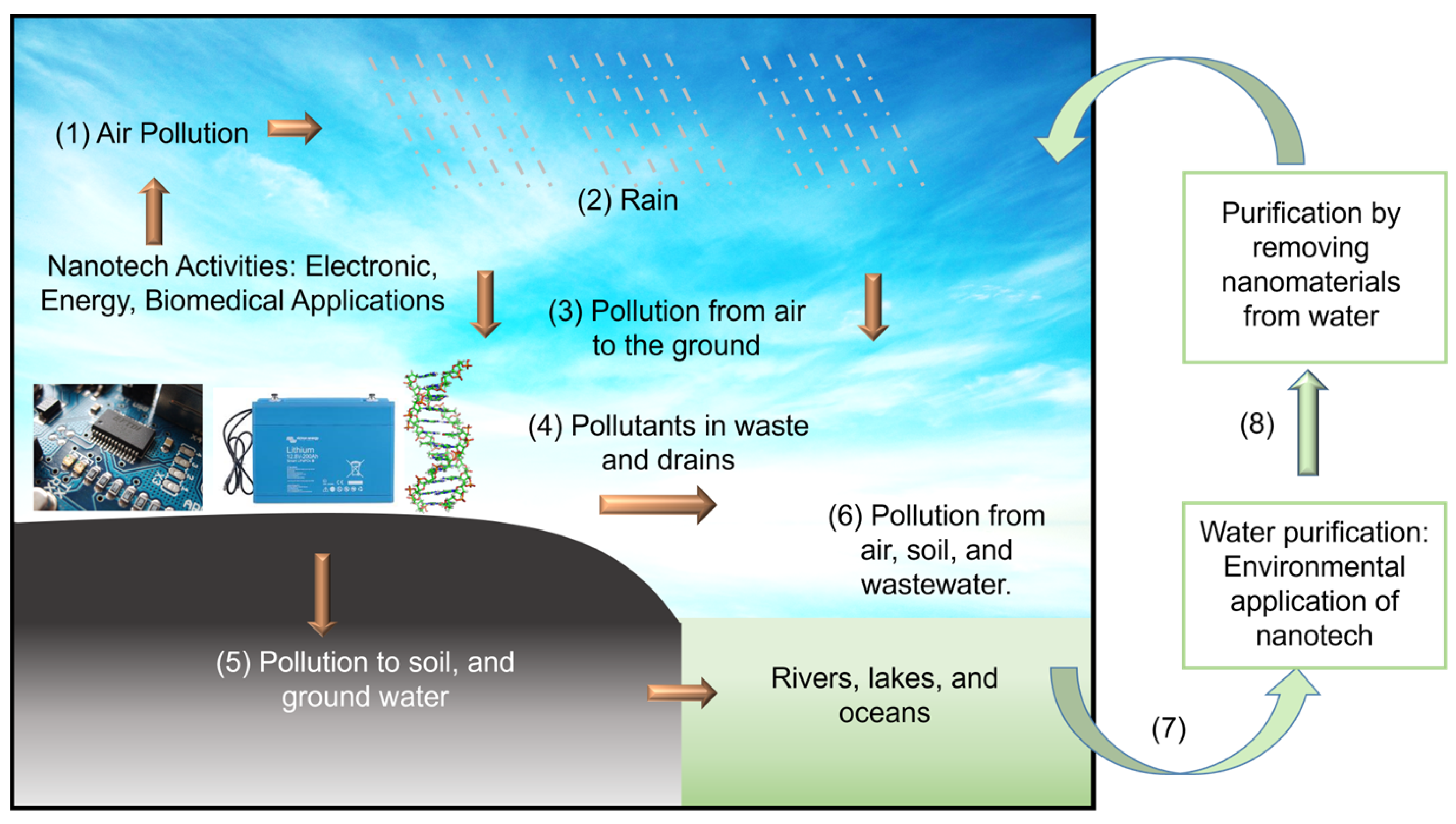
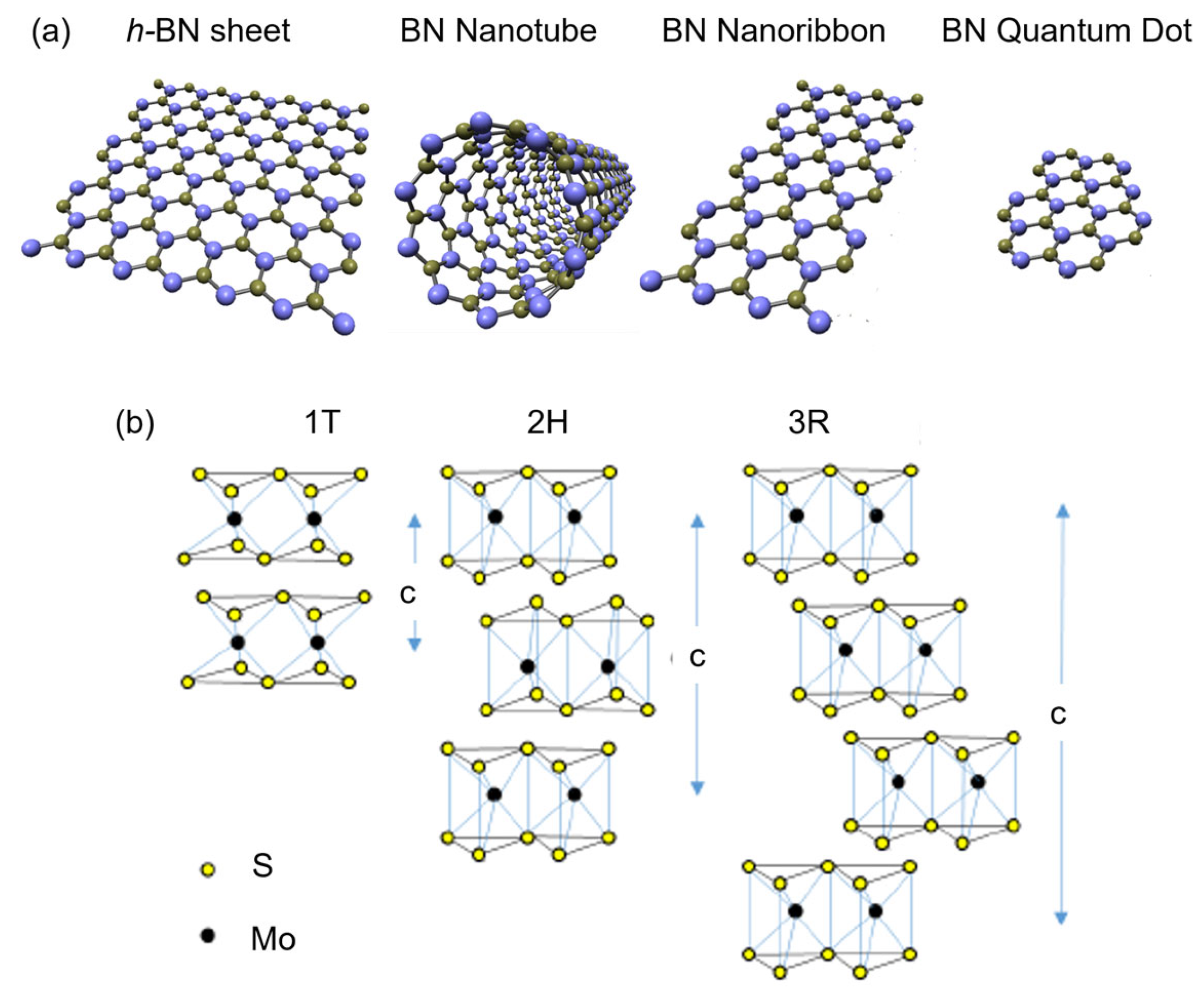
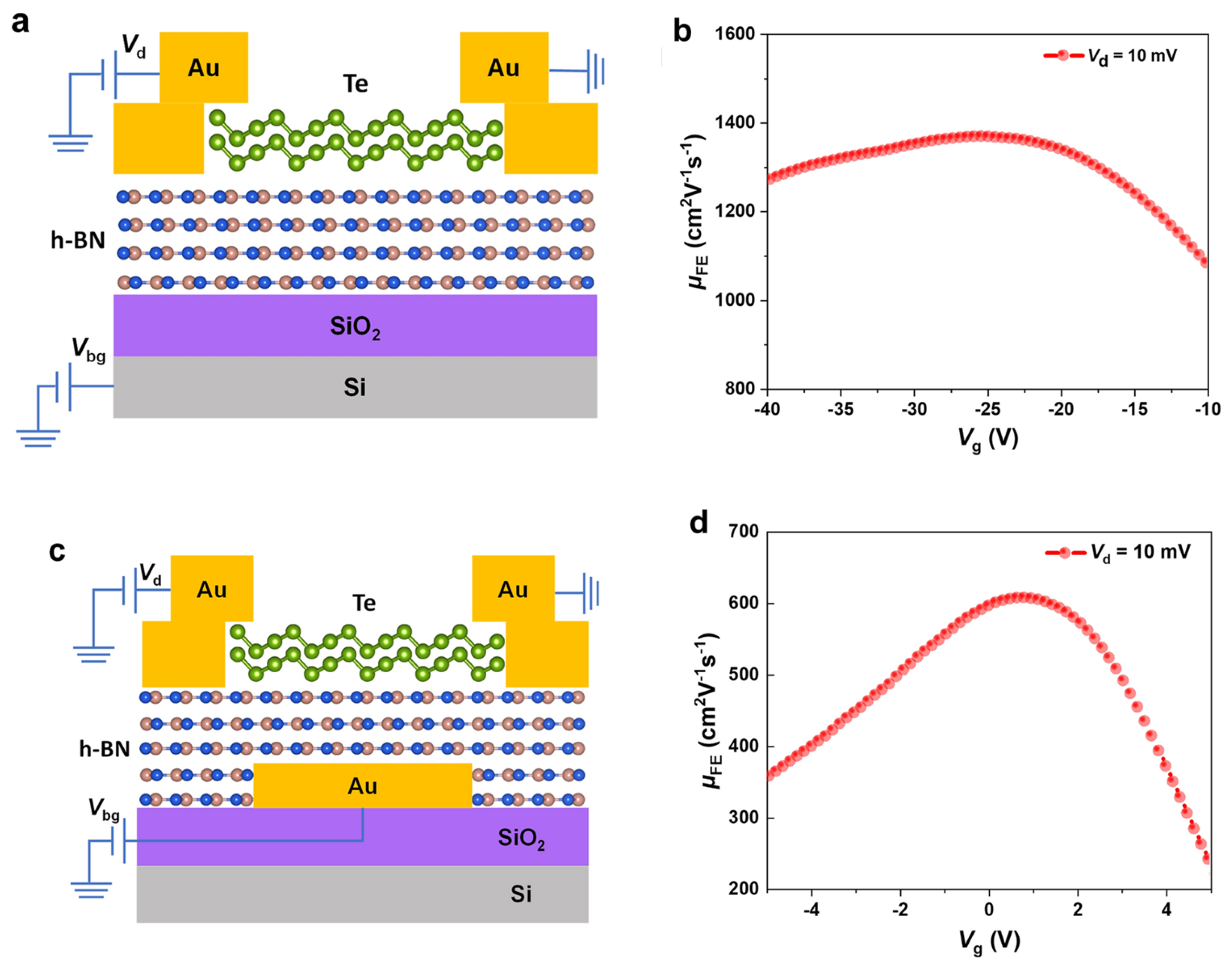
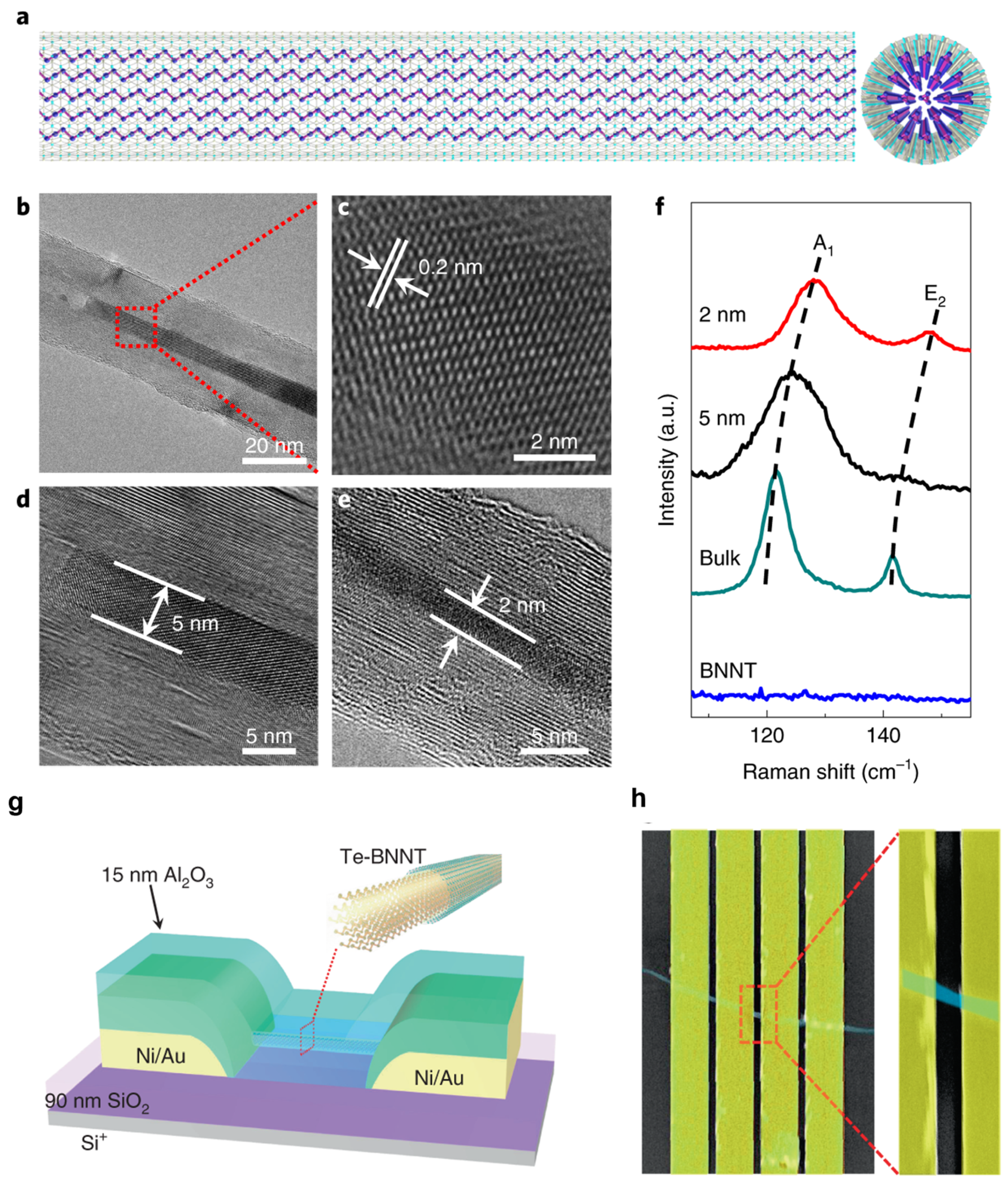


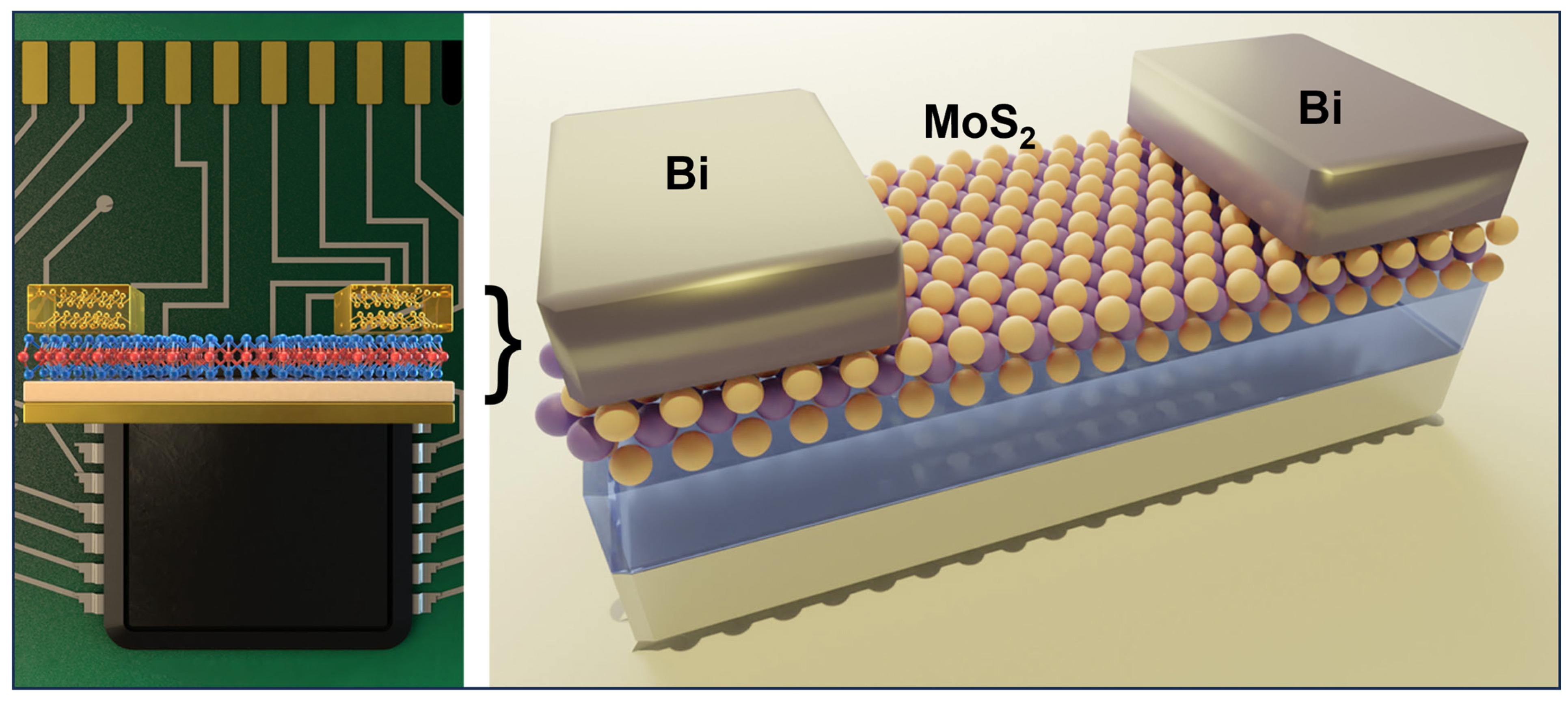

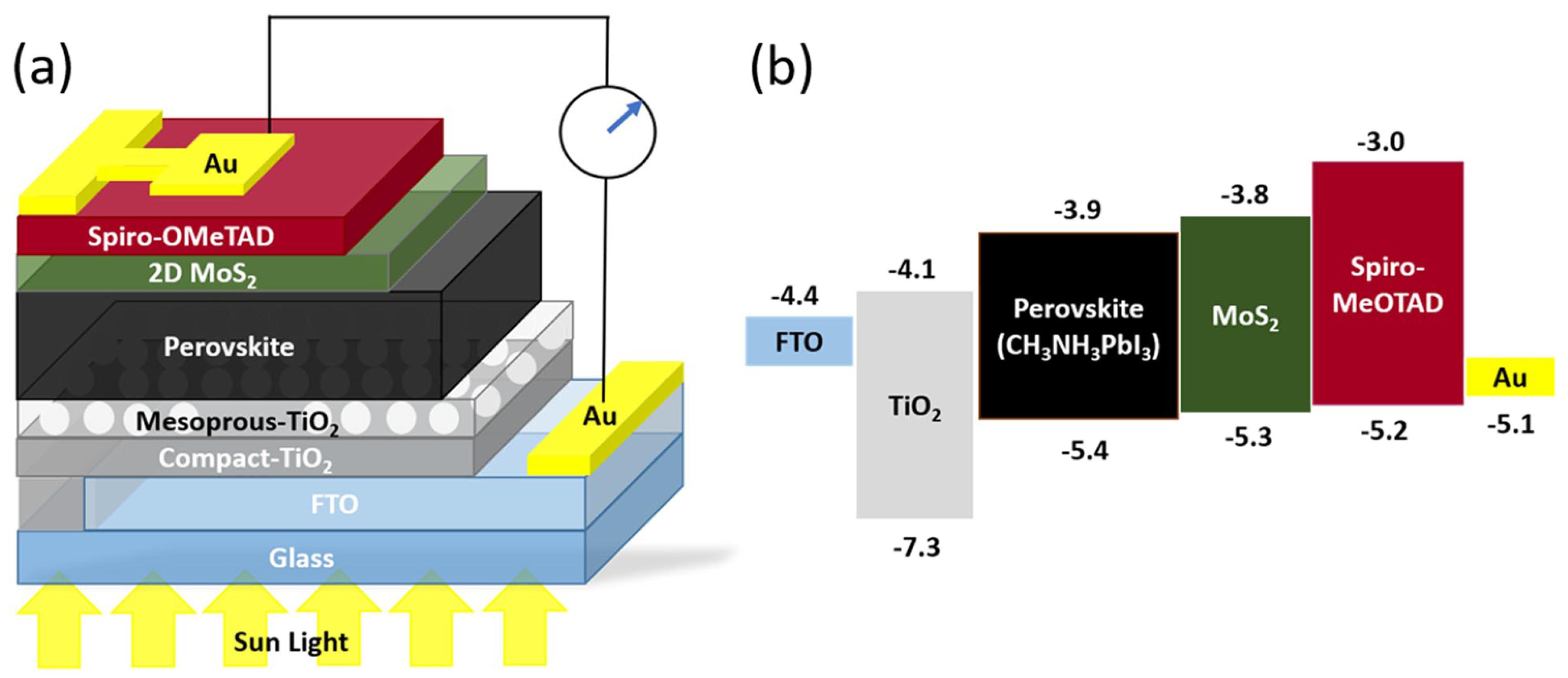
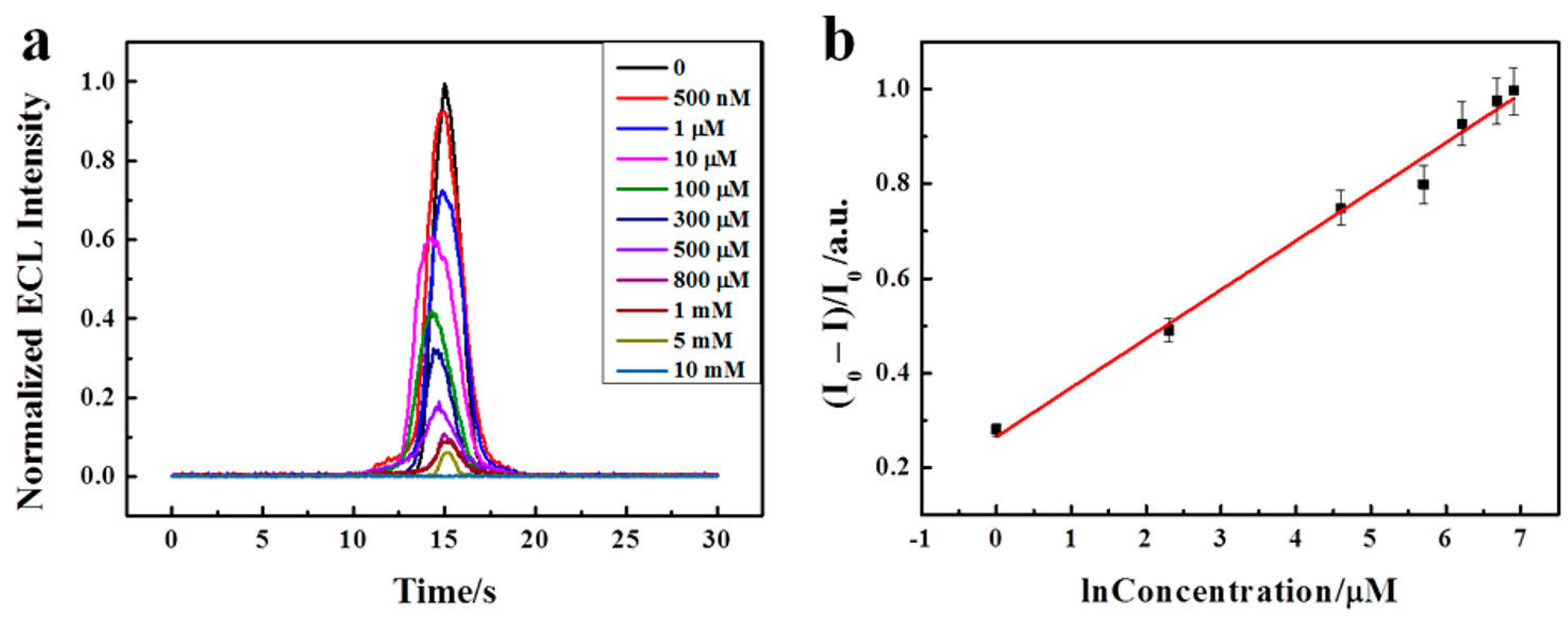
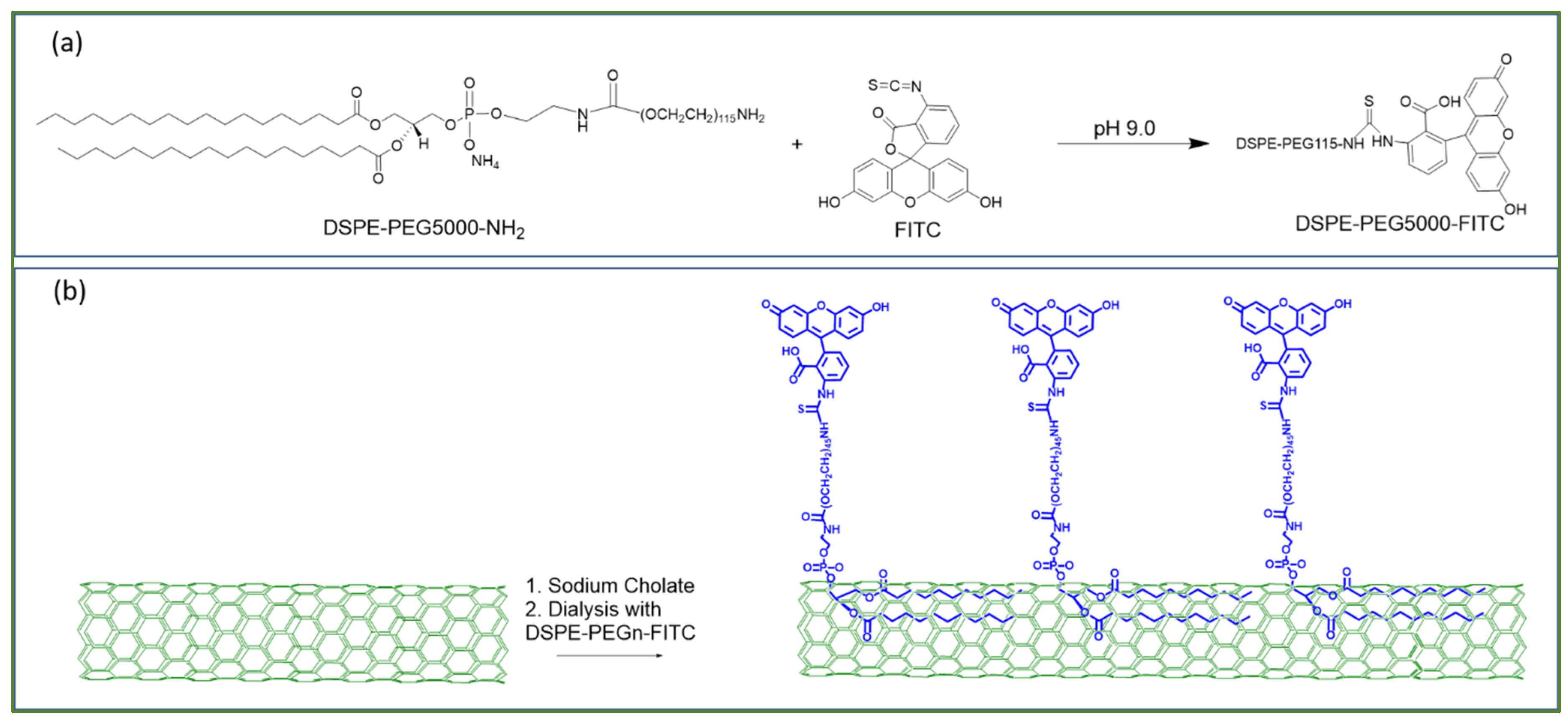
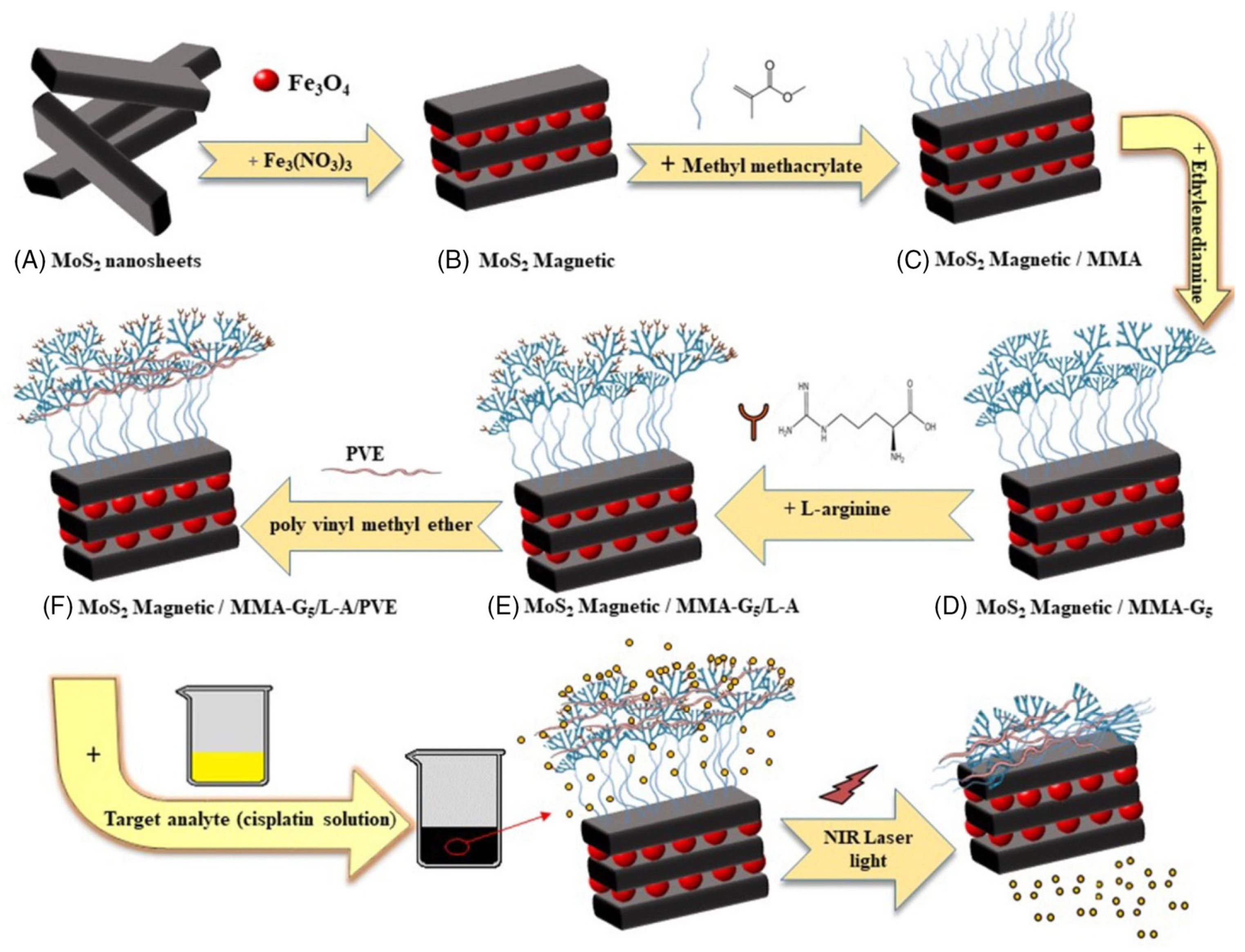

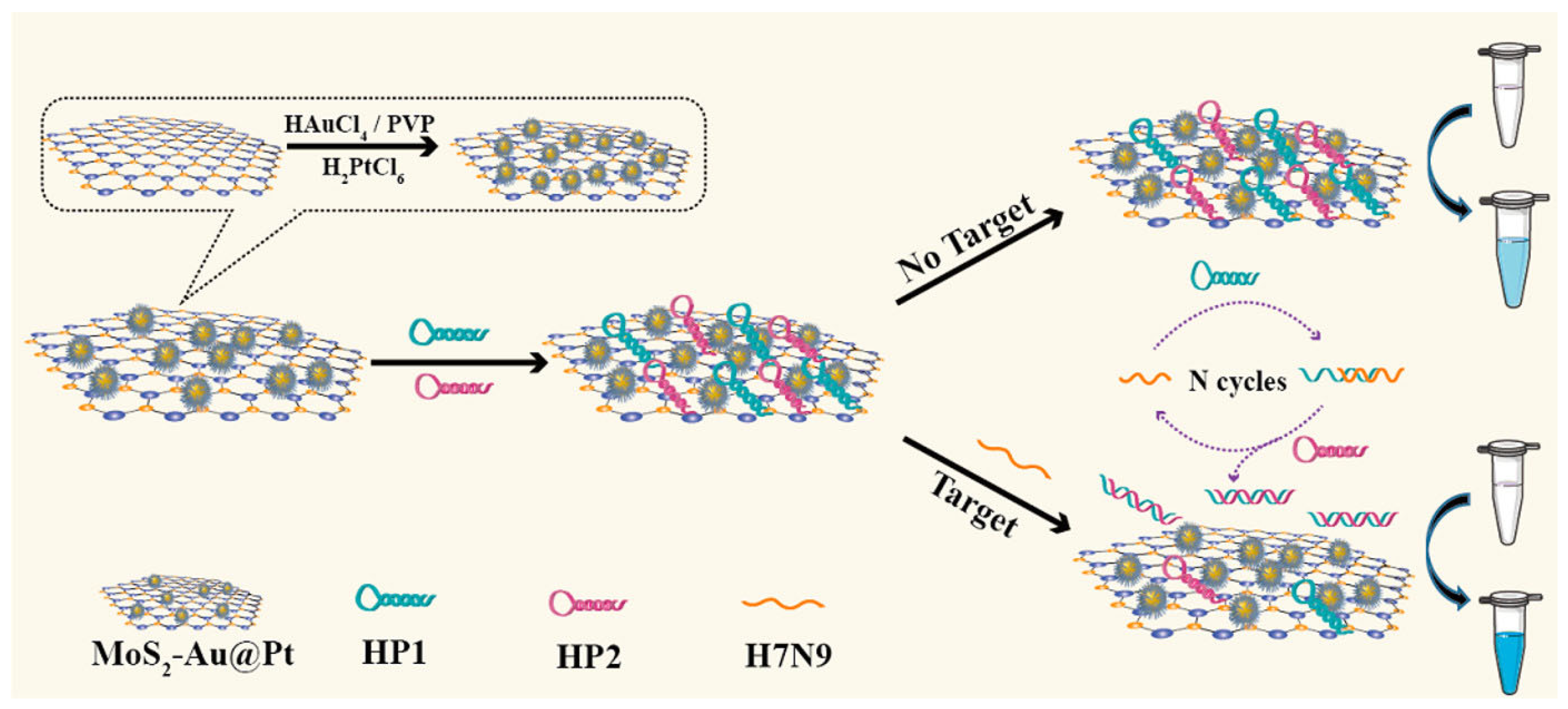
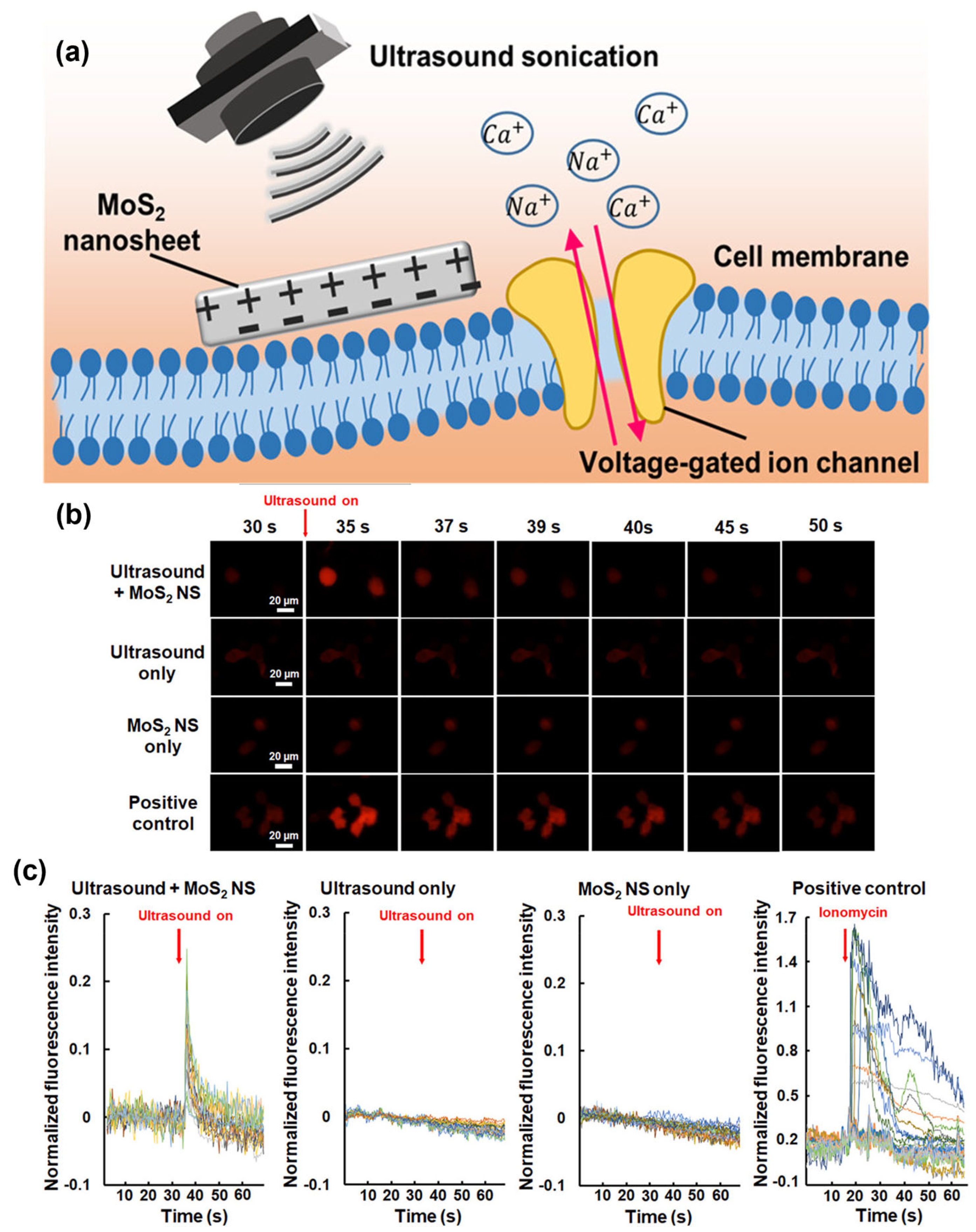
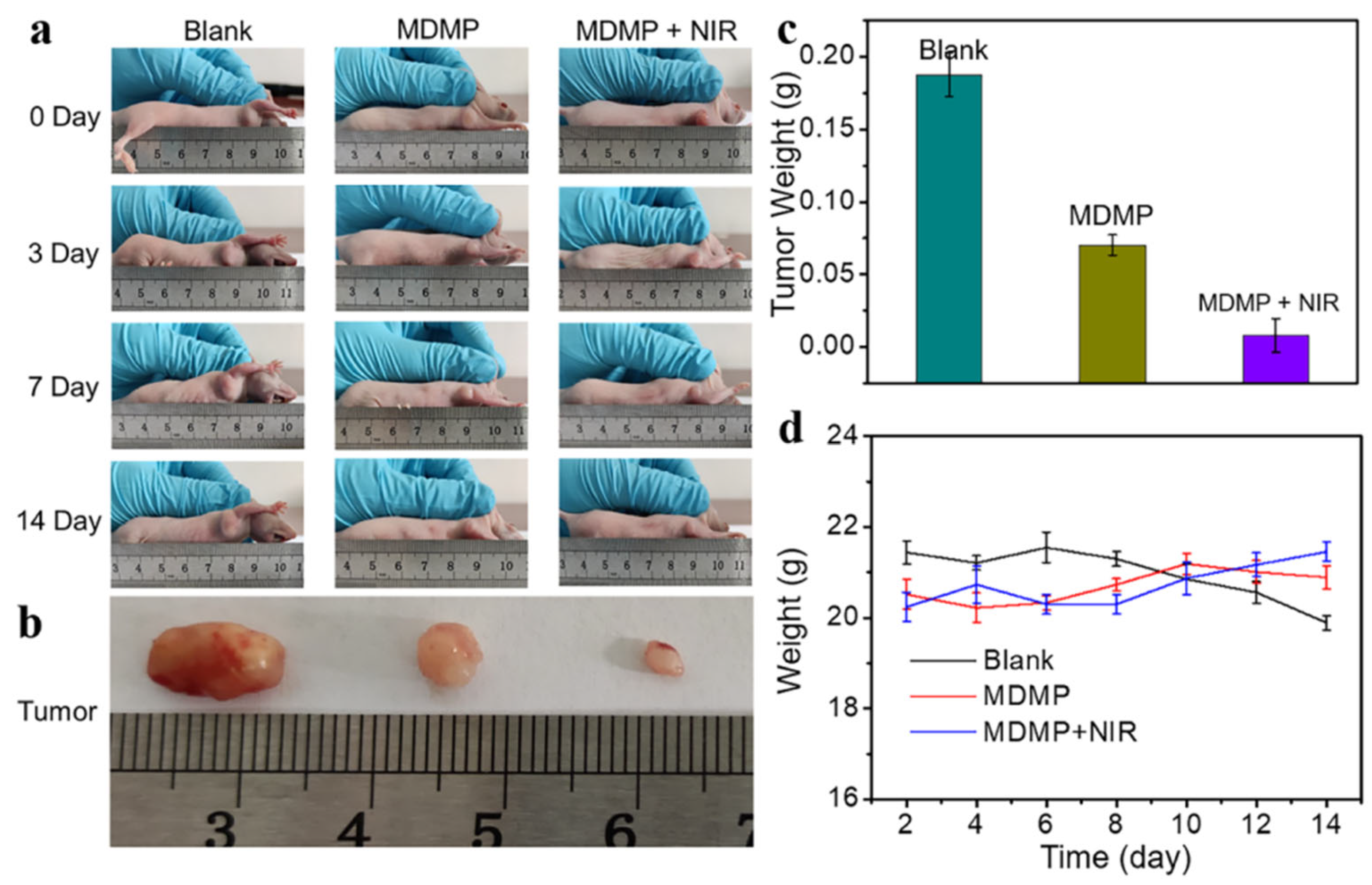



Disclaimer/Publisher’s Note: The statements, opinions and data contained in all publications are solely those of the individual author(s) and contributor(s) and not of MDPI and/or the editor(s). MDPI and/or the editor(s) disclaim responsibility for any injury to people or property resulting from any ideas, methods, instructions or products referred to in the content. |
© 2024 by the authors. Licensee MDPI, Basel, Switzerland. This article is an open access article distributed under the terms and conditions of the Creative Commons Attribution (CC BY) license (https://creativecommons.org/licenses/by/4.0/).
Share and Cite
Uddin, J.; Dubey, R.; Balasubramaniam, V.S.; Kabel, J.; Khare, V.; Salimi, Z.; Sharma, S.; Zhang, D.; Yap, Y.K. Progress in Electronic, Energy, Biomedical and Environmental Applications of Boron Nitride and MoS2 Nanostructures. Micromachines 2024, 15, 349. https://doi.org/10.3390/mi15030349
Uddin J, Dubey R, Balasubramaniam VS, Kabel J, Khare V, Salimi Z, Sharma S, Zhang D, Yap YK. Progress in Electronic, Energy, Biomedical and Environmental Applications of Boron Nitride and MoS2 Nanostructures. Micromachines. 2024; 15(3):349. https://doi.org/10.3390/mi15030349
Chicago/Turabian StyleUddin, Join, Raksha Dubey, Vinaayak Sivam Balasubramaniam, Jeff Kabel, Vedika Khare, Zohreh Salimi, Sambhawana Sharma, Dongyan Zhang, and Yoke Khin Yap. 2024. "Progress in Electronic, Energy, Biomedical and Environmental Applications of Boron Nitride and MoS2 Nanostructures" Micromachines 15, no. 3: 349. https://doi.org/10.3390/mi15030349
APA StyleUddin, J., Dubey, R., Balasubramaniam, V. S., Kabel, J., Khare, V., Salimi, Z., Sharma, S., Zhang, D., & Yap, Y. K. (2024). Progress in Electronic, Energy, Biomedical and Environmental Applications of Boron Nitride and MoS2 Nanostructures. Micromachines, 15(3), 349. https://doi.org/10.3390/mi15030349






